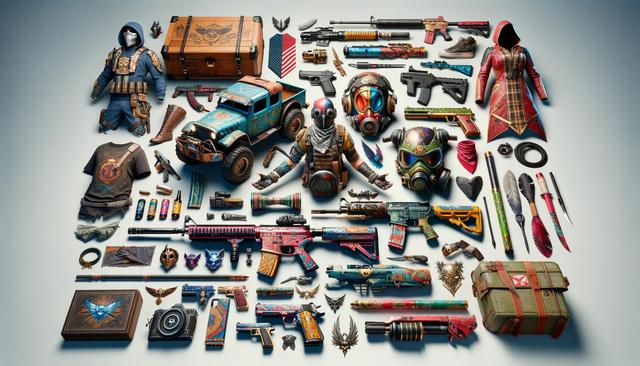Understanding Custom Game Skins
Custom game skins are visual modifications that change the outer appearance of a character, weapon, or item in a video game. These skins do not typically alter gameplay mechanics but allow players to express their individuality within the gaming environment. Whether it’s a unique color palette, a themed outfit, or a stylized weapon design, custom skins add a personal touch to the gaming experience. In popular games like battle royales and shooters, custom skins have become a central part of the community culture, often sparking creativity and competition among creators and players alike.
Creating your own custom game skins involves a blend of creativity and technical know-how. Players interested in designing skins for games like a fortnite game skin must familiarize themselves with the specific game’s modding tools or editor platforms. Some games offer official support for custom skins, while others rely on third-party tools. The rise of community-driven customization has encouraged more developers to provide resources that make skin design more accessible.
Why Players Love Customization
The demand for custom game skins has grown significantly, and for good reason. Customization offers players the opportunity to stand out in a crowded online world. This personalization can turn a standard avatar into a representation of the player’s identity or interests. In games that feature fortnite skins, for instance, players often seek ways to create or obtain designs that reflect pop culture, seasonal themes, or completely original concepts.
Here are a few reasons why custom skins are so popular:
- They allow for personal expression and creativity.
- They can enhance player engagement and enjoyment.
- They often foster a sense of community through shared designs and collaborations.
- They can be used to commemorate events, achievements, or milestones.
In multiplayer settings, having a unique look can make a player more memorable and can even serve as a conversation starter or a point of admiration among peers.
Learning to Design Skins
If you’re wondering how to make custom skins, the journey begins with understanding basic design principles and the tools required for game asset creation. Many aspiring designers start by exploring UI and UX design courses, which lay the groundwork for visual design and user interaction. These courses help learners understand color theory, visual hierarchy, and software like Photoshop or 3D modeling tools, which are essential for skin creation.
Some steps to start designing your own skins include:
- Research the game’s modding guidelines and tools.
- Practice designing with image editing or 3D modeling software.
- Learn about texture mapping and how it applies to 3D models.
- Take design courses that focus on digital art or user experience.
- Join communities or forums where skin creators share tips and feedback.
By building foundational skills through design education, particularly focused UI and UX design courses, you’ll be better equipped to bring your creative ideas to life within the game.
Integrating Your Skins in Games
Once you’ve created a custom game skin, the next step is to integrate it into your chosen game. This process varies depending on the game’s architecture and support for modding. For a game like Fortnite, skin design is typically limited to official releases, but many players still experiment with unofficial concepts or mockups to showcase their creativity.
For games that allow user-generated content, uploading your skin may involve:
- Packaging the design files in the correct format.
- Testing the skin in a local or development environment.
- Submitting it to a workshop or community marketplace if applicable.
- Following copyright and design guidelines to avoid violations.
It’s also important to ensure that the skin performs well in-game, meaning it doesn’t cause graphical glitches or affect gameplay visibility. Strong attention to detail and a focus on user experience can make your custom skin more appealing and functional.
Turning Creativity into a Career
Designing custom game skins isn’t just a hobby—it can also be a stepping stone into a larger career in game design or digital art. Many professionals in the gaming industry started by tinkering with mods and skins before moving into more structured design roles. Enrolling in design courses can provide the credentials and portfolio development needed to pursue job opportunities in this space.
Some potential career paths stemming from skin design include:
- Game artist or character designer
- User interface designer
- 3D modeler or texture artist
- Freelance digital designer for gaming communities
By combining passion with education, especially through targeted UI and UX design courses, aspiring designers can build a strong foundation in both aesthetics and functionality—key skills that are essential in today’s gaming world.
Conclusion: Start Your Creative Journey
Custom game skins offer more than just visual flair—they’re a gateway to creative expression, community involvement, and even career development. Whether you’re drawn to the idea of designing your own fortnite skins or want to explore the broader world of digital art, learning how to make custom skins is a rewarding and educational experience. With the right tools, design courses, and motivation, anyone can bring their unique vision to the gaming world. Embracing both creativity and technical skill, skin design is a meaningful way to leave your mark in the games you love.
